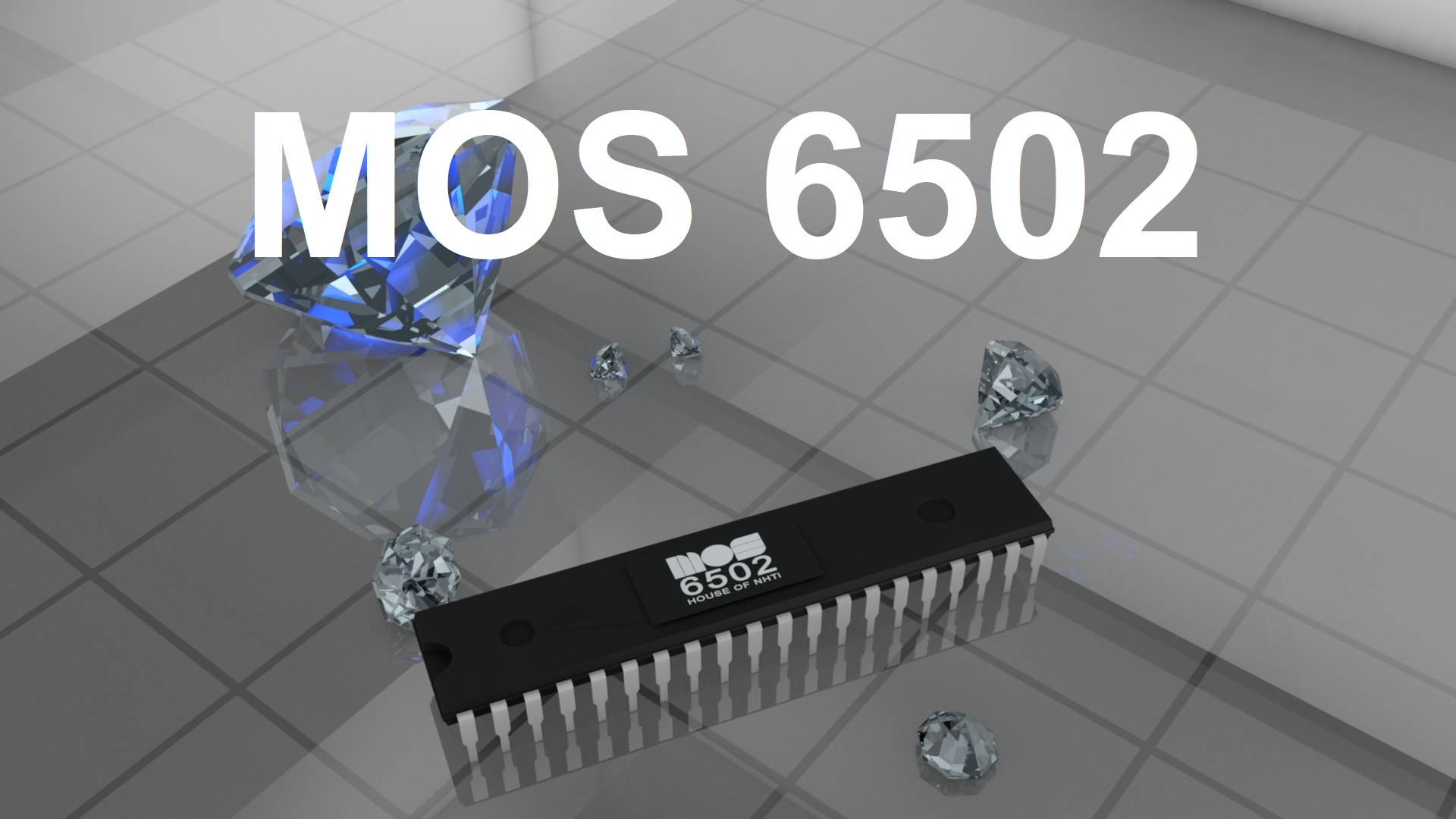On November 14, 1999, an episode of Futurama, an animated science fiction comedy series designed by The Simpsons creator Matt Groening, shocked computer geeks with technological insight that was completely unprecedented in prime time entertainment. In the episode "Fry and the Slurm Factory," a character named Professor Farnsworth directs his F-beam into the head of the famous robot Bender. In the illuminated area, you can see a small rectangle with the inscription 6502.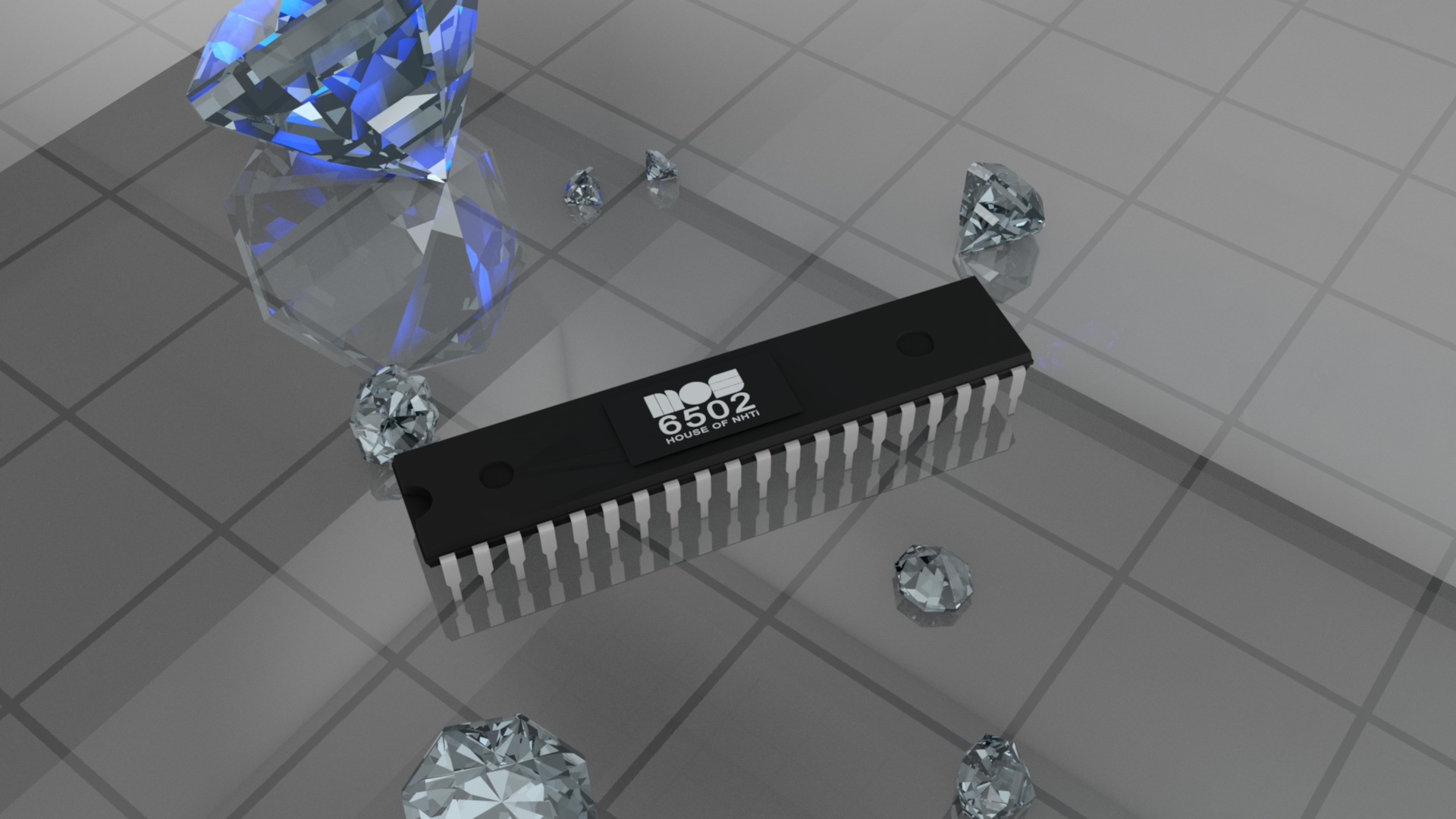 MOS Technology 6502 Thecameo of this legendary chip in Futurama shocked the minds of geeks, causing an explosion of comments on online forums. But long before the entry into the Internet era, the 6502 microprocessor made a revolution, which served as an impetus in the development and accessibility of computer technology for the mass consumer.
MOS Technology 6502 Thecameo of this legendary chip in Futurama shocked the minds of geeks, causing an explosion of comments on online forums. But long before the entry into the Internet era, the 6502 microprocessor made a revolution, which served as an impetus in the development and accessibility of computer technology for the mass consumer.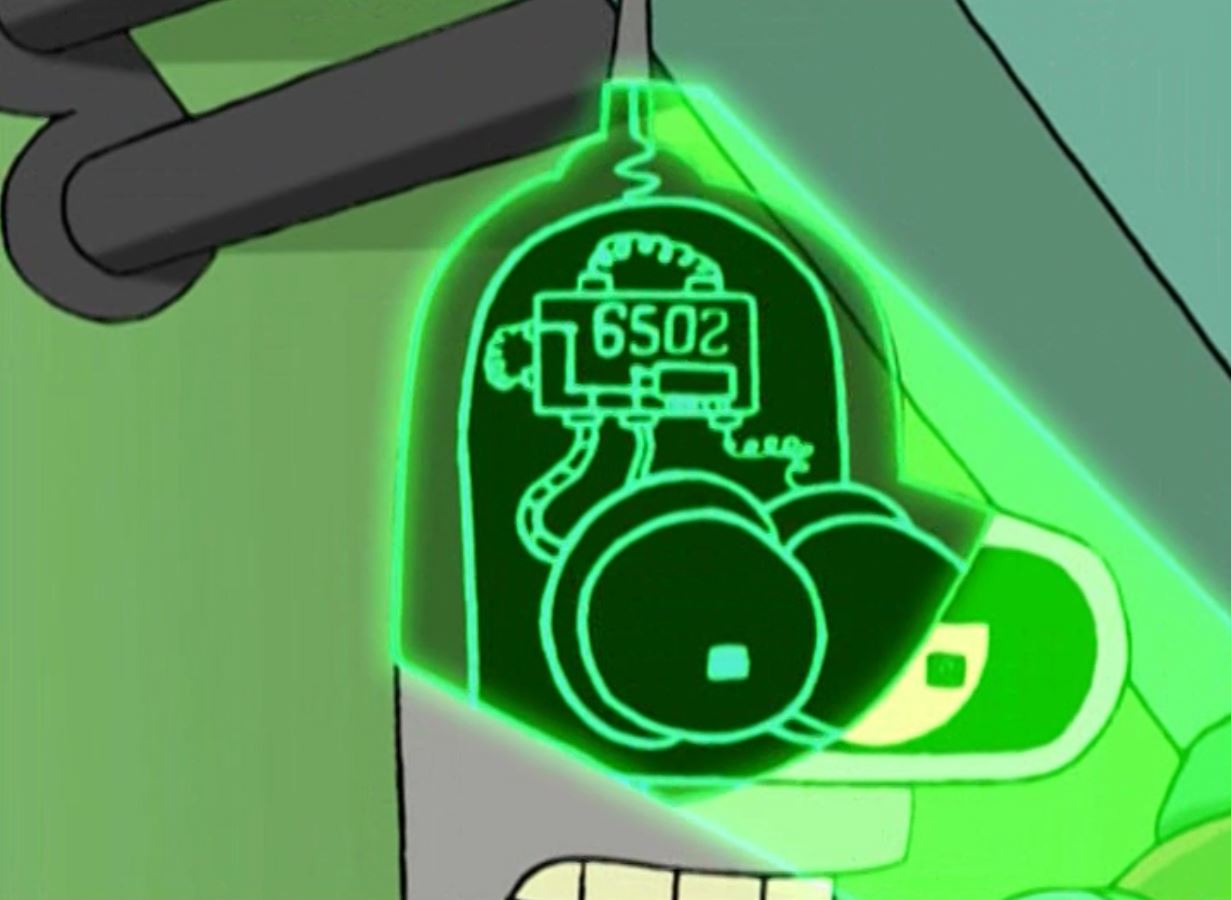 MOS 6502 - the brain of a Bender robotIn 1971, Motorola launched the 6800 microprocessor project with Tom Bennett as chief architect. The layout of the chips began at the end of 1972, the first copies of the 6800 were made in February 1974, and the full family was officially released in November of that year. A year earlier, Bennett hired Chuck Peddle for the architectural support of existing products of the 6800 family. This solution will subsequently become one of the key in the semiconductor industry.
MOS 6502 - the brain of a Bender robotIn 1971, Motorola launched the 6800 microprocessor project with Tom Bennett as chief architect. The layout of the chips began at the end of 1972, the first copies of the 6800 were made in February 1974, and the full family was officially released in November of that year. A year earlier, Bennett hired Chuck Peddle for the architectural support of existing products of the 6800 family. This solution will subsequently become one of the key in the semiconductor industry. Chuck peddleAt that time, Motorola's target customers were well-known electronic companies such as Hewlett-Packard, Tektronix, TRW and Chrysler. In May 1972, Motorola engineers began to visit selected customers and share the details of their proposed 8-bit microprocessor system with ROM, RAM, parallel and serial interfaces. In early 1974, they provided engineering samples of the chips so that customers could prototype their systems. Motorola's strategy for the entire product family did not focus on the price of the microprocessor, but on reducing the total development cost for the customer. Intel and Motorola initially set the price at $ 360 per microprocessor, while the actual price of production was much lower. Motorola has proposed a development kit,containing 6800 with six support chips for $ 300.Peddle, accompanying salespeople during visits to customers, discovered that they were confused by the high cost of these microprocessors. In addition, in 6800 there were many "extra" instructions that were simply not used in practice. Paddle and other team members began to design a smaller microprocessor, but with improved features. In those years, Motorola’s new semiconductor manufacturing facility in Austin, Texas, had difficulty manufacturing MOS chips, and in the middle of 1974 a year-long decline began in the semiconductor industry.Motorola's semiconductor product management was overwhelmed by problems and showed no interest in the low-cost microprocessor offer from Peddle. In the end, Peddle received an official letter asking him to stop working on his system. He responded by telling Motorola that the letter was an official statement about the “abandonment of the project,” so the intellectual property that he had developed up to this point now belonged to him. In November 1975, Motorola chairman Robert Galvin ultimately agreed that the Paddle chip concept was good and that the division missed that opportunity. Ultimately, the department was reorganized, and management changed.Paddle began looking outside of Motorola for a funding source for his new project. First he turned to the CEO of MOSTEK. He refused and later commented on his refusal by fearing litigation with Motorola. During one of his trips, Paddle visited a Ford car company. Bob Johnson, who later headed Ford's engine automation division, said their former colleague, John Payvinen, moved to General Instrument, where he learned the art of designing semiconductor devices. Since leaving General Instrument, he has been working on calculator chipsets at the new MOS Technology company, which he founded in Forge, Pennsylvania in 1969.
Chuck peddleAt that time, Motorola's target customers were well-known electronic companies such as Hewlett-Packard, Tektronix, TRW and Chrysler. In May 1972, Motorola engineers began to visit selected customers and share the details of their proposed 8-bit microprocessor system with ROM, RAM, parallel and serial interfaces. In early 1974, they provided engineering samples of the chips so that customers could prototype their systems. Motorola's strategy for the entire product family did not focus on the price of the microprocessor, but on reducing the total development cost for the customer. Intel and Motorola initially set the price at $ 360 per microprocessor, while the actual price of production was much lower. Motorola has proposed a development kit,containing 6800 with six support chips for $ 300.Peddle, accompanying salespeople during visits to customers, discovered that they were confused by the high cost of these microprocessors. In addition, in 6800 there were many "extra" instructions that were simply not used in practice. Paddle and other team members began to design a smaller microprocessor, but with improved features. In those years, Motorola’s new semiconductor manufacturing facility in Austin, Texas, had difficulty manufacturing MOS chips, and in the middle of 1974 a year-long decline began in the semiconductor industry.Motorola's semiconductor product management was overwhelmed by problems and showed no interest in the low-cost microprocessor offer from Peddle. In the end, Peddle received an official letter asking him to stop working on his system. He responded by telling Motorola that the letter was an official statement about the “abandonment of the project,” so the intellectual property that he had developed up to this point now belonged to him. In November 1975, Motorola chairman Robert Galvin ultimately agreed that the Paddle chip concept was good and that the division missed that opportunity. Ultimately, the department was reorganized, and management changed.Paddle began looking outside of Motorola for a funding source for his new project. First he turned to the CEO of MOSTEK. He refused and later commented on his refusal by fearing litigation with Motorola. During one of his trips, Paddle visited a Ford car company. Bob Johnson, who later headed Ford's engine automation division, said their former colleague, John Payvinen, moved to General Instrument, where he learned the art of designing semiconductor devices. Since leaving General Instrument, he has been working on calculator chipsets at the new MOS Technology company, which he founded in Forge, Pennsylvania in 1969. John PayvinenAfter a series of unsuccessful attempts to find financing, Peddle turned to Payvinen, who immediately gave the green light to his project. On August 19, 1974, Chuck Peddle and six of his colleagues left Motorola and joined MOS Technology. Of the seventeen developers and designers of chips in the 6800 team, seven remain. The goal of the team was to design and manufacture an inexpensive microprocessor for embedded applications and target it to the widest possible client base. This was only possible if the microprocessor were inexpensive.In the summer of 1975, Chuck Peddle, Will Matis and Rod Orgill developed the architecture of the new processors. The September article of the same year in EDN Magazine gives a brief description of the design of the new chips:
John PayvinenAfter a series of unsuccessful attempts to find financing, Peddle turned to Payvinen, who immediately gave the green light to his project. On August 19, 1974, Chuck Peddle and six of his colleagues left Motorola and joined MOS Technology. Of the seventeen developers and designers of chips in the 6800 team, seven remain. The goal of the team was to design and manufacture an inexpensive microprocessor for embedded applications and target it to the widest possible client base. This was only possible if the microprocessor were inexpensive.In the summer of 1975, Chuck Peddle, Will Matis and Rod Orgill developed the architecture of the new processors. The September article of the same year in EDN Magazine gives a brief description of the design of the new chips:MOS Technology FamilyMOS Technology 650X , 6800, , , . 6800 MOS Technology, , …
At MOS Technology, the processor was mock-up using colored pencils and vellum paper. Given the limitations on the size of the chip, all the drawings had to be constantly reviewed. Payvinen worked on the drawing of the instruction decoder, Peddle on ALU and registers.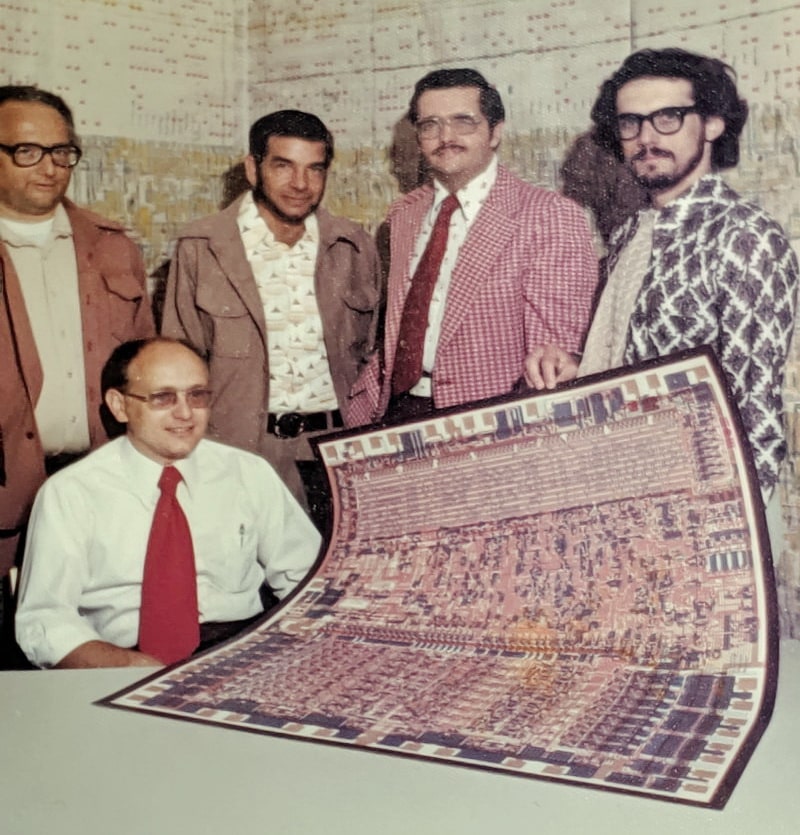 Several members of the MOS 6502 team (from left to right):
Several members of the MOS 6502 team (from left to right):
Chuck Peddle, Rod Orgill, Terry Holdt and Ray Heart.
Seated: Will Matis.
The circuit they are holding is a 200-fold increase in the design of the 6502 chipThe size of the 6502 chip was almost half that of 6800, which allowed more chips to be printed on one wafer of high-purity silicon. In addition, the plates contained a certain percentage of physical defects on their surface - any chip printed on this defect would be defective. Since smaller chips are less often printed on a defect, the production of such processors has provided a significant reduction in costs and final cost. Crystal size MOS 6502 and Motorola 6800MOS subsequently introduced two microprocessors based on the same basic design: 6501, which was compatible with the Motorola 6800 connector, and 6502, which reorganized the pinout to support the built-in clock. Both chips work with other support chips designed for the 6800, but do not work with software, due to the different set of instructions, registers, and addressing modes.The introduction of the new MOS microprocessors was very different from the traditional multi-month product launch. The first launch of a new chip is usually used for internal testing and is provided to individual customers as engineering samples. These chips often have structural defects that are subsequently repaired before production begins. Chuck Peddle's goal was to sell the first batch of 6501 and 6502 to the Wescon San Francisco exhibit, which began on September 16, 1975. Peddle was a very efficient representative and MOS Technology microprocessors were widely covered in the industry press.One of the first was a full-page story about microprocessors in the July 24, 1975 issue of Electronics magazine. Articles also appeared in EE Times, EDN, Electronic News, Byte, and Microcomputer Digest magazines. An advertisement for the 6501 chip appeared in several publications in the first week of August of that year. The cost of the microprocessor was $ 20. In September, the advertising campaign of the new microprocessors MOS Technology began. In the same month, 6502 went on sale at a price of only $ 25.The 6502 was an 8-bit processor with a 16-bit address bus that can address up to 64 KB of memory. It was produced using an 8 micron process. The crystal area was 3.9 by 4.3 mm.
Crystal size MOS 6502 and Motorola 6800MOS subsequently introduced two microprocessors based on the same basic design: 6501, which was compatible with the Motorola 6800 connector, and 6502, which reorganized the pinout to support the built-in clock. Both chips work with other support chips designed for the 6800, but do not work with software, due to the different set of instructions, registers, and addressing modes.The introduction of the new MOS microprocessors was very different from the traditional multi-month product launch. The first launch of a new chip is usually used for internal testing and is provided to individual customers as engineering samples. These chips often have structural defects that are subsequently repaired before production begins. Chuck Peddle's goal was to sell the first batch of 6501 and 6502 to the Wescon San Francisco exhibit, which began on September 16, 1975. Peddle was a very efficient representative and MOS Technology microprocessors were widely covered in the industry press.One of the first was a full-page story about microprocessors in the July 24, 1975 issue of Electronics magazine. Articles also appeared in EE Times, EDN, Electronic News, Byte, and Microcomputer Digest magazines. An advertisement for the 6501 chip appeared in several publications in the first week of August of that year. The cost of the microprocessor was $ 20. In September, the advertising campaign of the new microprocessors MOS Technology began. In the same month, 6502 went on sale at a price of only $ 25.The 6502 was an 8-bit processor with a 16-bit address bus that can address up to 64 KB of memory. It was produced using an 8 micron process. The crystal area was 3.9 by 4.3 mm. Crystal Size MOS 6502The internal logic of the processor works at the same speed as the external clock frequency, but despite the low clock frequencies (from 1 to 2 MHz), the chip performance was competitive with other processors of that time using a significantly higher clock frequency. The low clock speed reduced the performance requirements of the memory and peripheral devices connected to the processor. This was critical at a time when available memory had access times ranging from 250 to 450 nanoseconds. The original NMOS 6502 was minimalistically designed and efficiently manufactured, and therefore was much cheaper - an important factor in obtaining architectural victories in the very price-sensitive markets for game consoles and home computers.The presentation of microprocessors 6501 and 6502 in Wescon was a huge success. The stumbling block was that widespread press coverage caught the attention of Motorola. In October 1975, Motorola lowered the price by 6,800 from $ 175 to $ 69, and on November 3 asked the federal court to ban MOS Technology from producing and selling microprocessor products. They also filed a lawsuit claiming patent infringement and misappropriation of trade secrets.At that time, Motorola was a company with huge resources, a total turnover of billions of dollars and a portfolio of patents for semiconductors, including 6800.The lawsuit cited the names of four former Motorola engineers working on the 6800 chip. During the lawsuit, Motorola discovered that one engineer, Mike Janes, ignored Peddle's instructions and introduced his 6800 chip design into the MOS Technology design documents.In March 1976, now independent MOS Technology had an unfavorable financial situation, which helped to resolve the matter. The company abandoned the 6501 processor, paying 200 thousand dollars and returning documents confidentially disputed by Motorola. In May 1976, Motorola lowered the price of 6,800 to $ 35, and in November Commodore acquired MOS Technology.With legal troubles, MOS had a problem getting developers to buy their processors. This prompted Chuck Peddle to design the MDT-650 single-board computer. Another group within the company developed KIM-1, which was supplied without a case and I / O devices, but which made it possible to assemble a computer for less than $ 500 - the board itself cost $ 245 and a third-party computer terminal and compact cassette recorder could be purchased for it. Surprisingly, the MOS KIM-1 sold well to both enthusiasts and engineers.
Crystal Size MOS 6502The internal logic of the processor works at the same speed as the external clock frequency, but despite the low clock frequencies (from 1 to 2 MHz), the chip performance was competitive with other processors of that time using a significantly higher clock frequency. The low clock speed reduced the performance requirements of the memory and peripheral devices connected to the processor. This was critical at a time when available memory had access times ranging from 250 to 450 nanoseconds. The original NMOS 6502 was minimalistically designed and efficiently manufactured, and therefore was much cheaper - an important factor in obtaining architectural victories in the very price-sensitive markets for game consoles and home computers.The presentation of microprocessors 6501 and 6502 in Wescon was a huge success. The stumbling block was that widespread press coverage caught the attention of Motorola. In October 1975, Motorola lowered the price by 6,800 from $ 175 to $ 69, and on November 3 asked the federal court to ban MOS Technology from producing and selling microprocessor products. They also filed a lawsuit claiming patent infringement and misappropriation of trade secrets.At that time, Motorola was a company with huge resources, a total turnover of billions of dollars and a portfolio of patents for semiconductors, including 6800.The lawsuit cited the names of four former Motorola engineers working on the 6800 chip. During the lawsuit, Motorola discovered that one engineer, Mike Janes, ignored Peddle's instructions and introduced his 6800 chip design into the MOS Technology design documents.In March 1976, now independent MOS Technology had an unfavorable financial situation, which helped to resolve the matter. The company abandoned the 6501 processor, paying 200 thousand dollars and returning documents confidentially disputed by Motorola. In May 1976, Motorola lowered the price of 6,800 to $ 35, and in November Commodore acquired MOS Technology.With legal troubles, MOS had a problem getting developers to buy their processors. This prompted Chuck Peddle to design the MDT-650 single-board computer. Another group within the company developed KIM-1, which was supplied without a case and I / O devices, but which made it possible to assemble a computer for less than $ 500 - the board itself cost $ 245 and a third-party computer terminal and compact cassette recorder could be purchased for it. Surprisingly, the MOS KIM-1 sold well to both enthusiasts and engineers.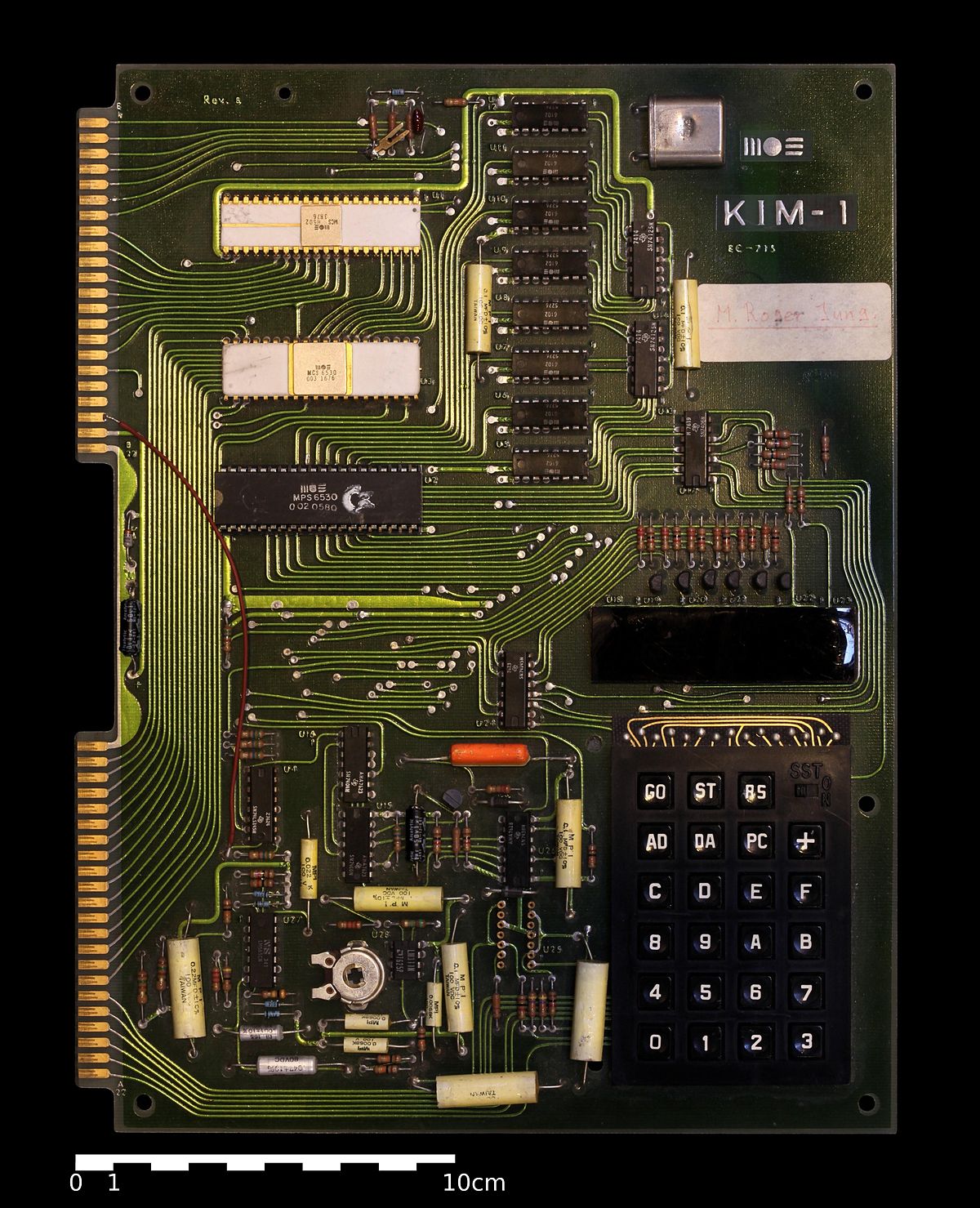 KIM-1One of the first publicly available uses of the 6502 design was the Apple I computer, developed by Steve Wozniak and demonstrated in April 1976 at the Homemade Computer Club in Palo Alto. Then it was used in Commodore PET and Apple II, released in 1977. Later it was used in 8-bit computers of the Atari, Acorn Atom, BBC Micro family and other designs for both home computers and business.
KIM-1One of the first publicly available uses of the 6502 design was the Apple I computer, developed by Steve Wozniak and demonstrated in April 1976 at the Homemade Computer Club in Palo Alto. Then it was used in Commodore PET and Apple II, released in 1977. Later it was used in 8-bit computers of the Atari, Acorn Atom, BBC Micro family and other designs for both home computers and business.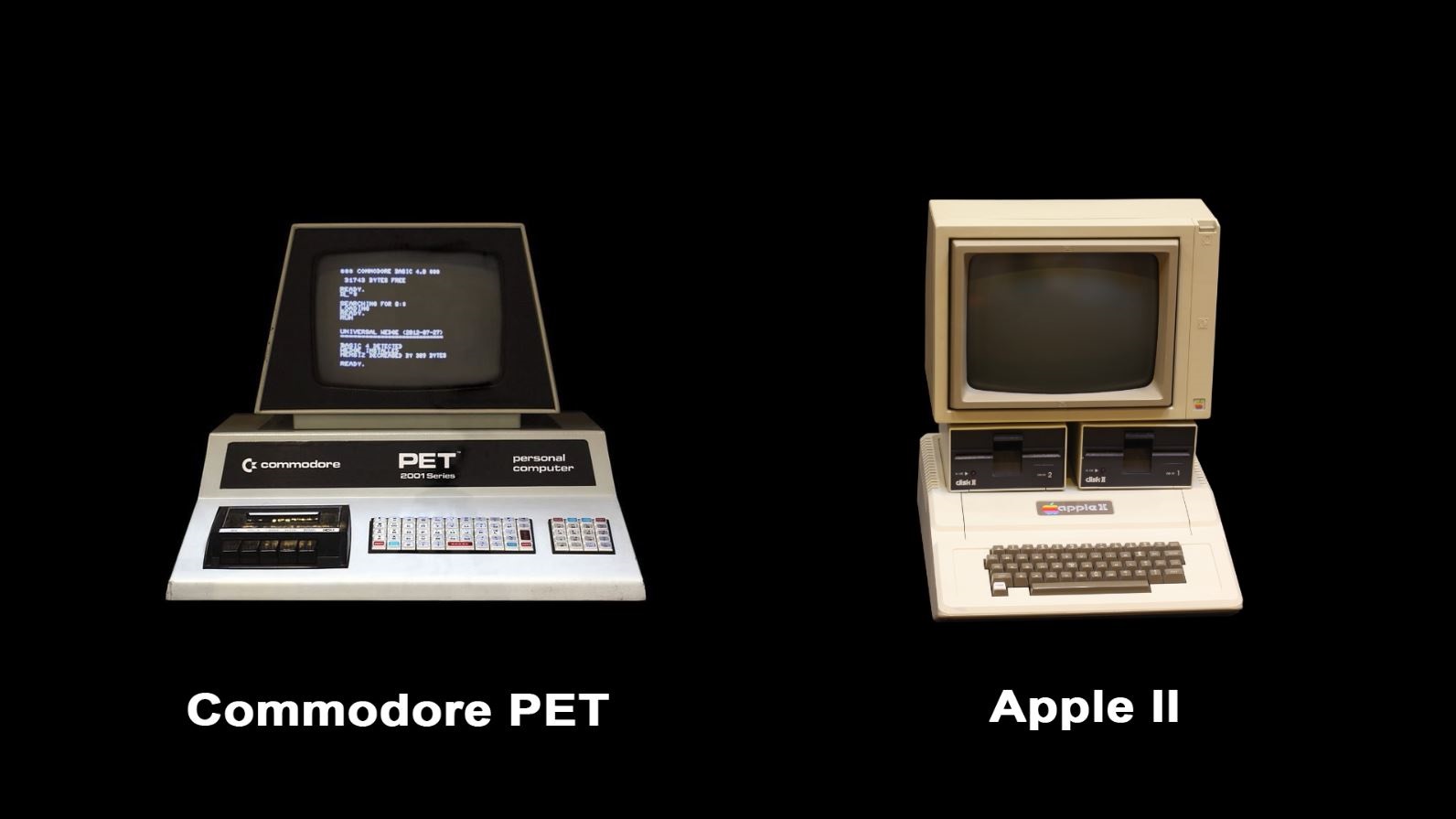 The low cost of the processor has become one of the reasons for the availability of computers for the mass buyer. An important area of processor usage has become game consoles. The pioneer in using processor design in their systems was Atari in the Atari VCS game console (later known as the Atari 2600).
The low cost of the processor has become one of the reasons for the availability of computers for the mass buyer. An important area of processor usage has become game consoles. The pioneer in using processor design in their systems was Atari in the Atari VCS game console (later known as the Atari 2600).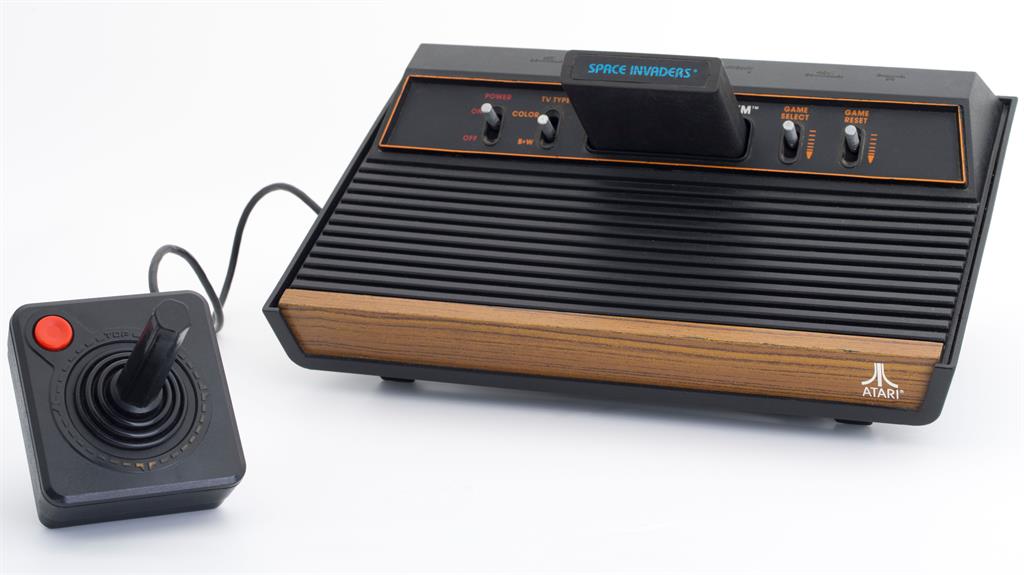 Atari vcsVCS used an upgraded version of 6502 called 6507, which had fewer pins and, as a result, could only address 8 KB of memory. The second-generation console went on sale by Christmas 1977 and became one of the most common game consoles in the next twenty years. More than forty million copies have been sold.Another significant application was the Japanese Nintendo Famicom, in the USA, in Europe, better known as the Nintendo Entertainment System. In Russia, they sold her a clone - Dendy. The console has conquered almost the entire American and Japanese market. According to official figures, more than 60 million copies were sold, but how many of them including clones are unknown. Today, the console continues to produce and sell, but not Nintendo. Officially, the prefix was supported until 2003 in Japan and until 1995 in the United States.
Atari vcsVCS used an upgraded version of 6502 called 6507, which had fewer pins and, as a result, could only address 8 KB of memory. The second-generation console went on sale by Christmas 1977 and became one of the most common game consoles in the next twenty years. More than forty million copies have been sold.Another significant application was the Japanese Nintendo Famicom, in the USA, in Europe, better known as the Nintendo Entertainment System. In Russia, they sold her a clone - Dendy. The console has conquered almost the entire American and Japanese market. According to official figures, more than 60 million copies were sold, but how many of them including clones are unknown. Today, the console continues to produce and sell, but not Nintendo. Officially, the prefix was supported until 2003 in Japan and until 1995 in the United States. Nintendo Entertainment System TheSoviet military industry released a compatible 4KC602VM1 65C02 processor for use in embedded 4K602VM1 systems
Nintendo Entertainment System TheSoviet military industry released a compatible 4KC602VM1 65C02 processor for use in embedded 4K602VM1 systems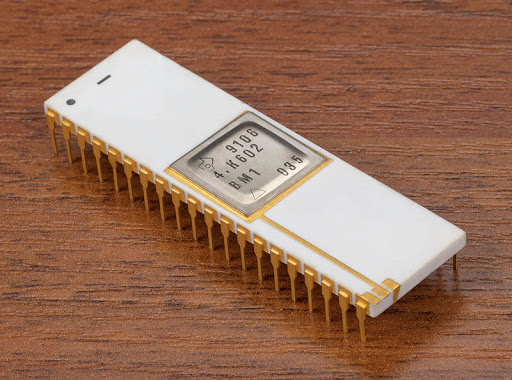 However, Soviet Agat personal computers used processors 6502 of foreign manufacture. Agate became the first Soviet serial 8-bit computer and was intended for use in the educational field. It was built at the Research Institute of Computing Complexes based on an Apple computer. They made the computer since 1984, the assembly continued until 1993. In schools, computers were used until 2001.
However, Soviet Agat personal computers used processors 6502 of foreign manufacture. Agate became the first Soviet serial 8-bit computer and was intended for use in the educational field. It was built at the Research Institute of Computing Complexes based on an Apple computer. They made the computer since 1984, the assembly continued until 1993. In schools, computers were used until 2001.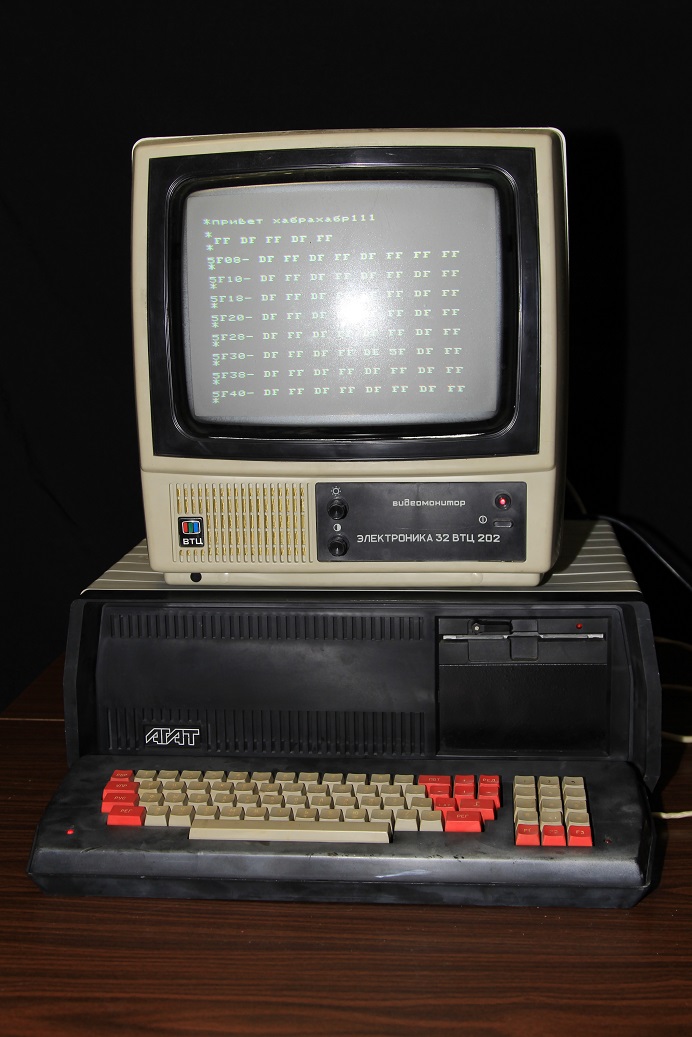 AgateDespite the dominant position of x86 in the modern world and the victory of the IBM PC architecture, we must remember the history of those distant microcircuits that invariably led to the fact that microprocessors have become an integral part of our everyday life. The introduction of this legendary chip has led to a rapid reduction in prices on the entire processor market. Along with the Zilog Z-80, he was the founder of a number of projects that led to the home computer revolution in the early 80s. And, despite its age, 6502 continues to be widely used in embedded systems with estimated production volumes of hundreds of millions.Video by article: tyk
AgateDespite the dominant position of x86 in the modern world and the victory of the IBM PC architecture, we must remember the history of those distant microcircuits that invariably led to the fact that microprocessors have become an integral part of our everyday life. The introduction of this legendary chip has led to a rapid reduction in prices on the entire processor market. Along with the Zilog Z-80, he was the founder of a number of projects that led to the home computer revolution in the early 80s. And, despite its age, 6502 continues to be widely used in embedded systems with estimated production volumes of hundreds of millions.Video by article: tyk